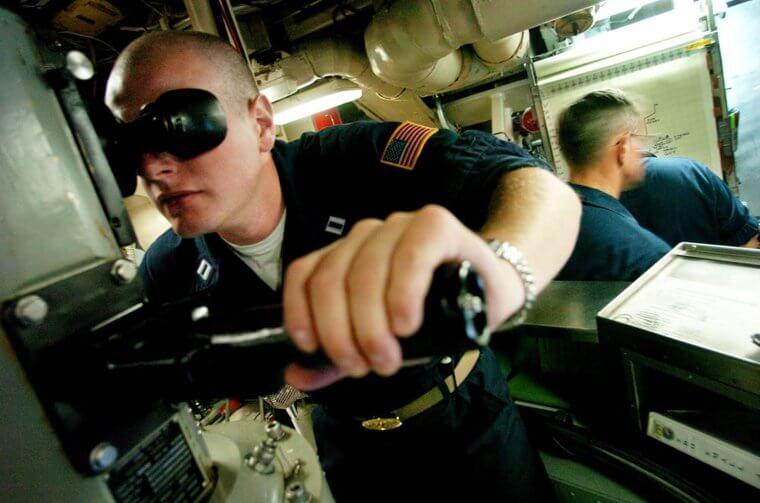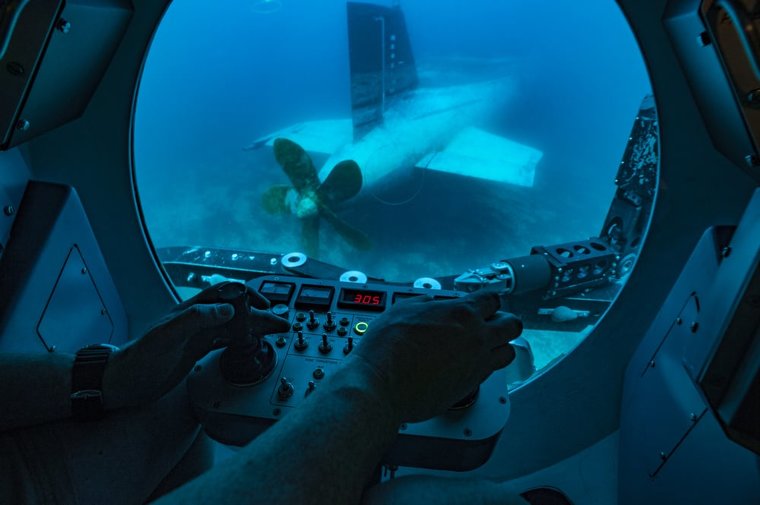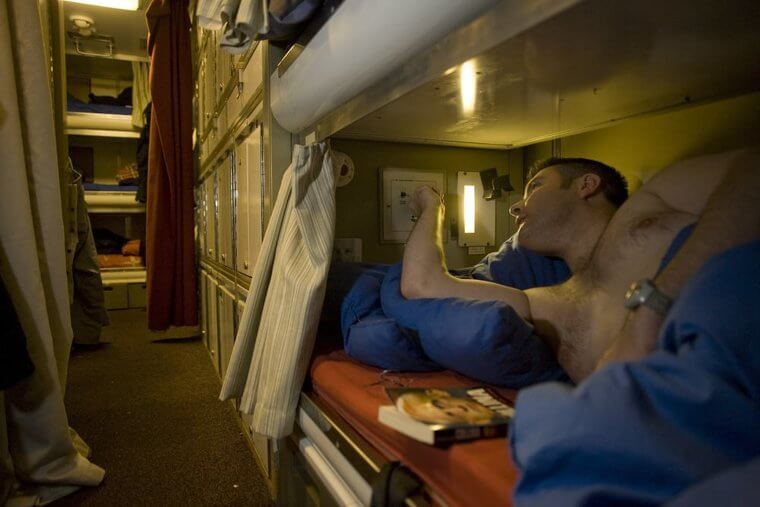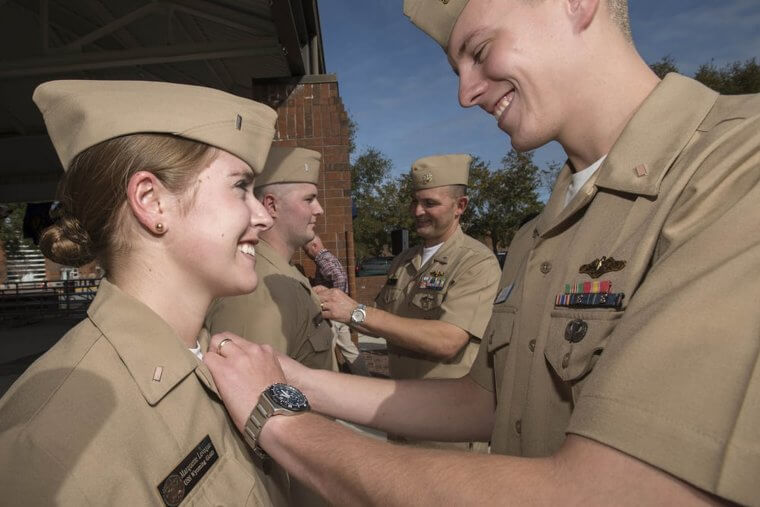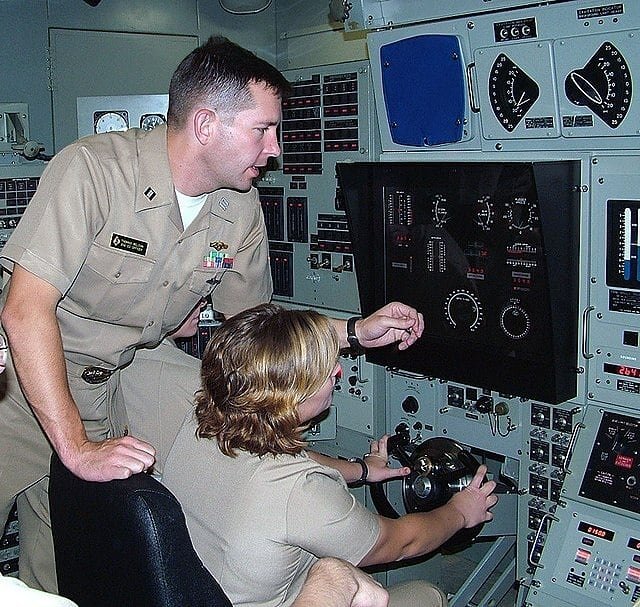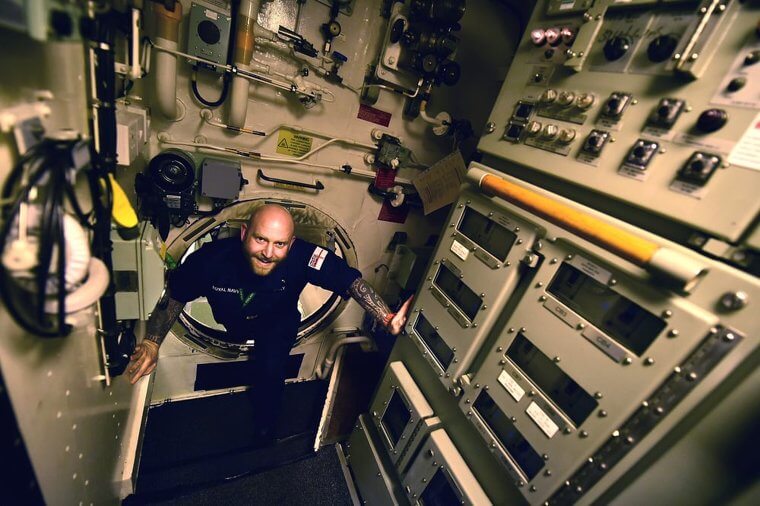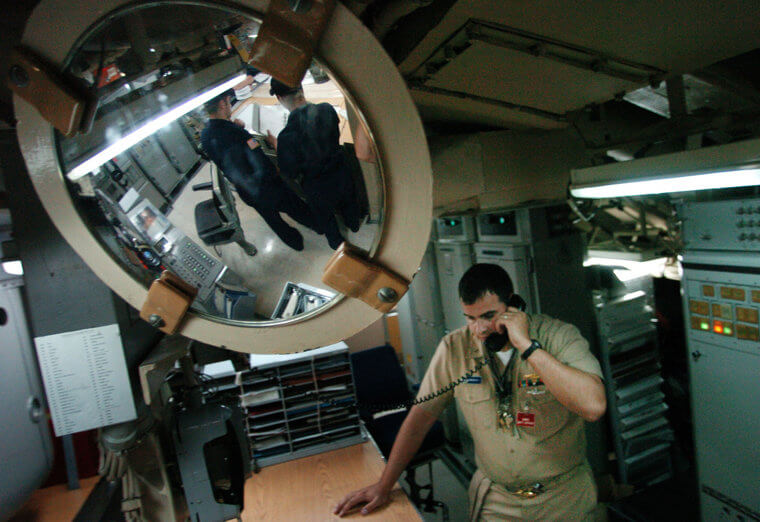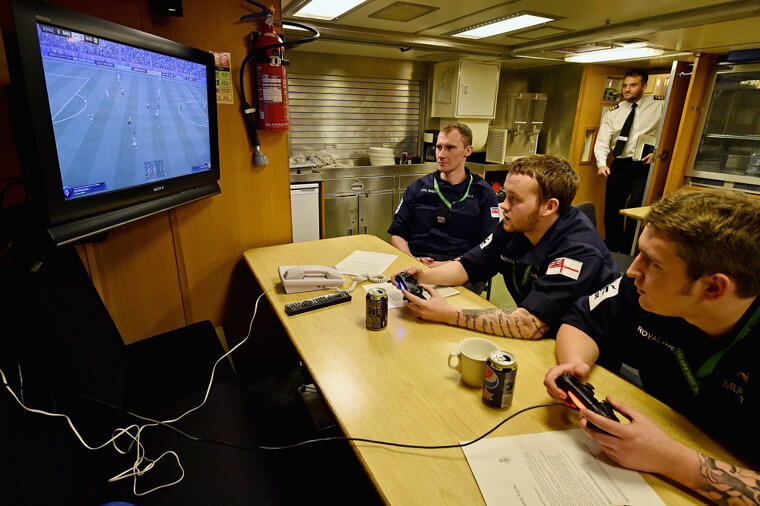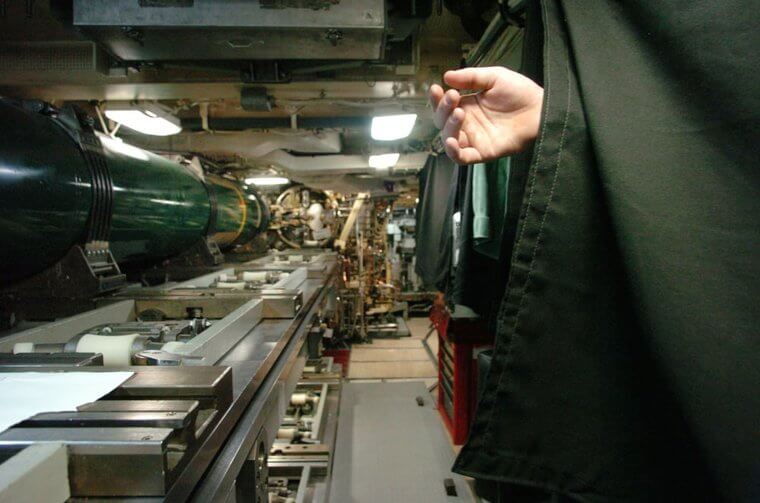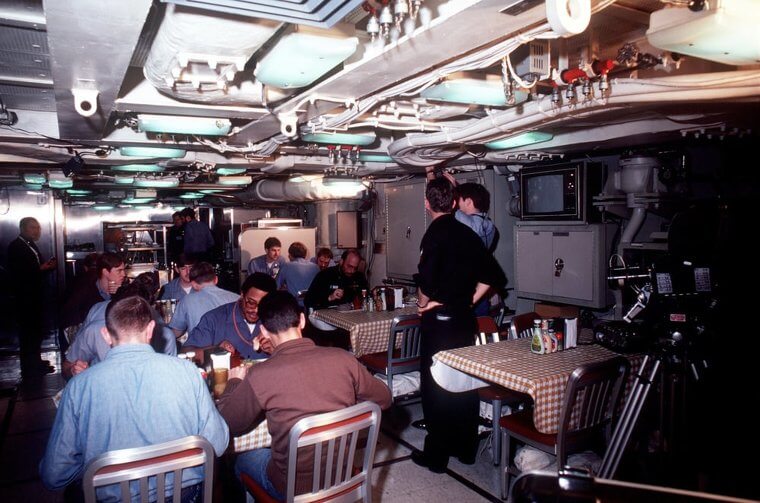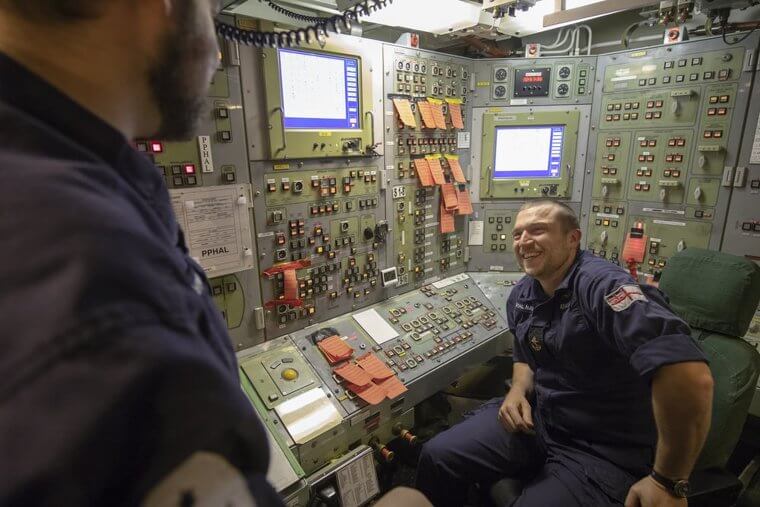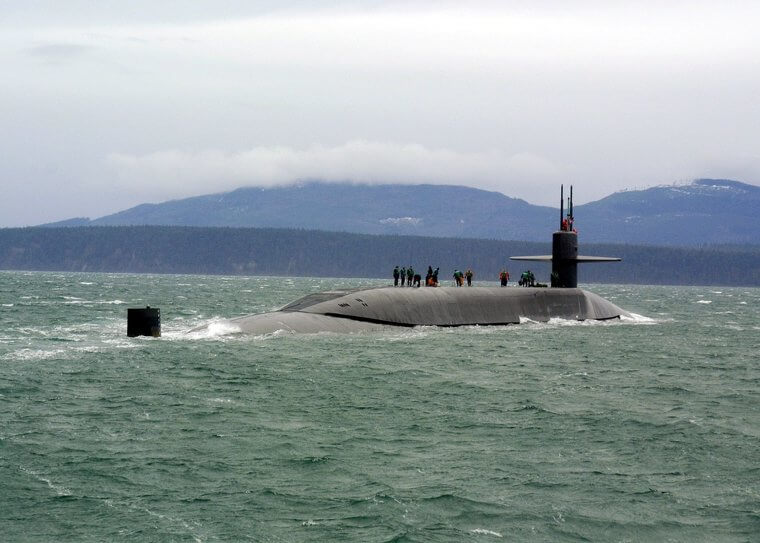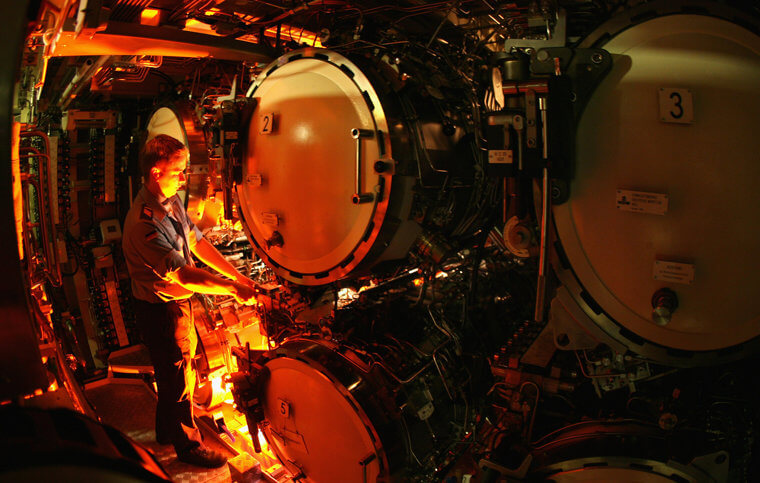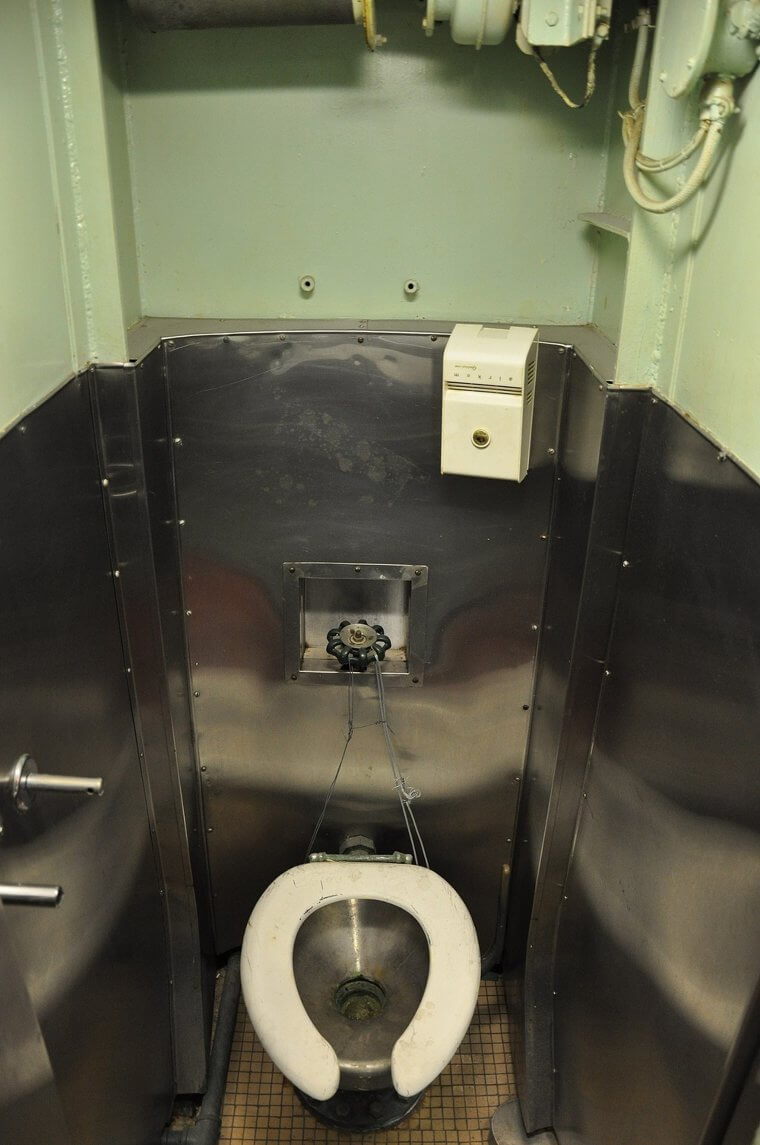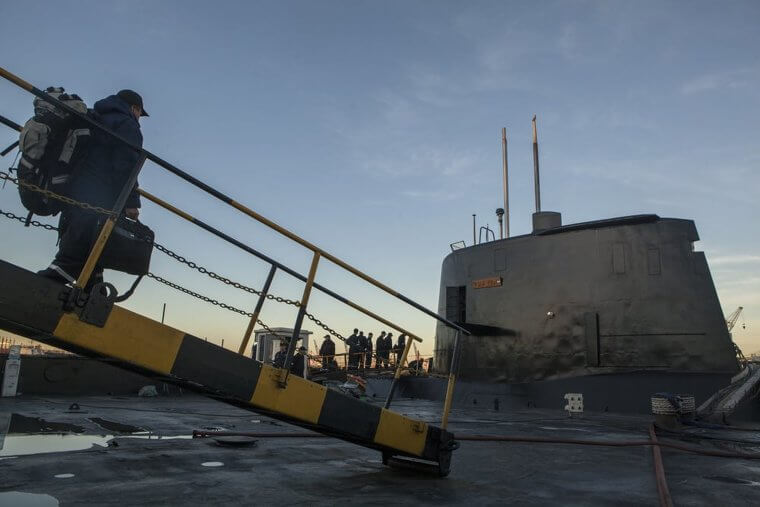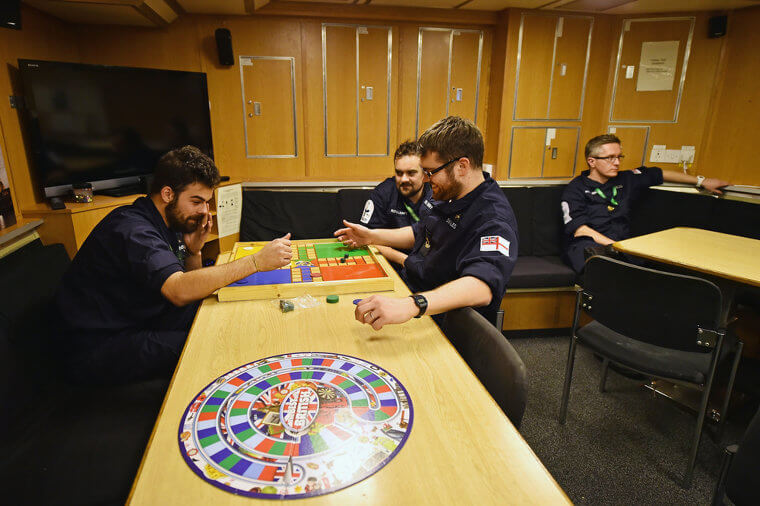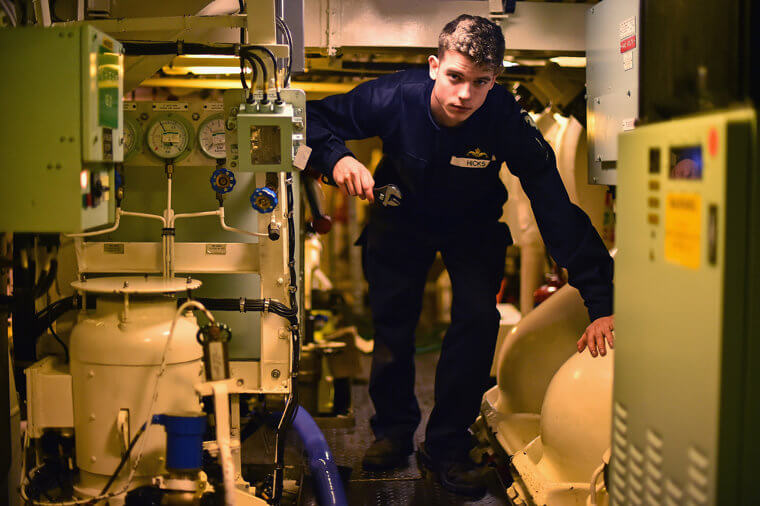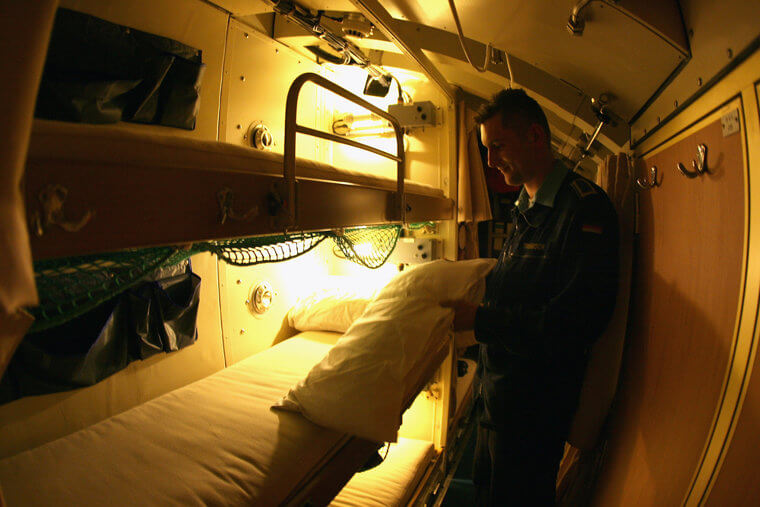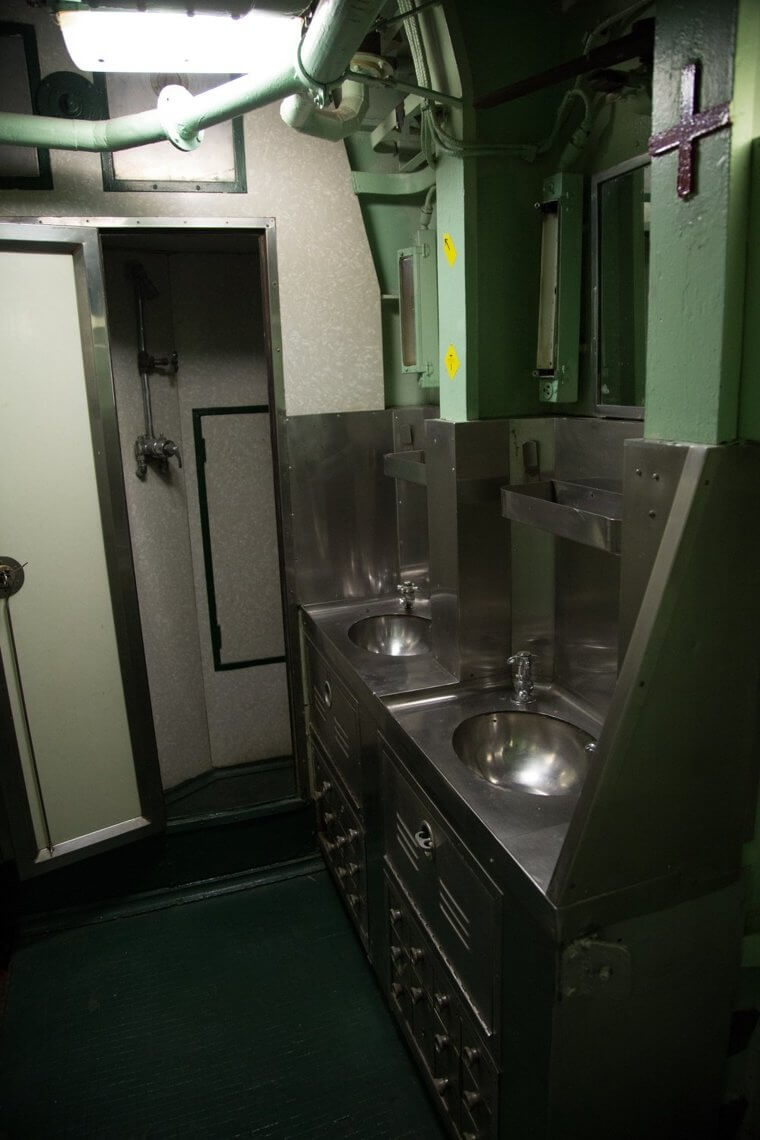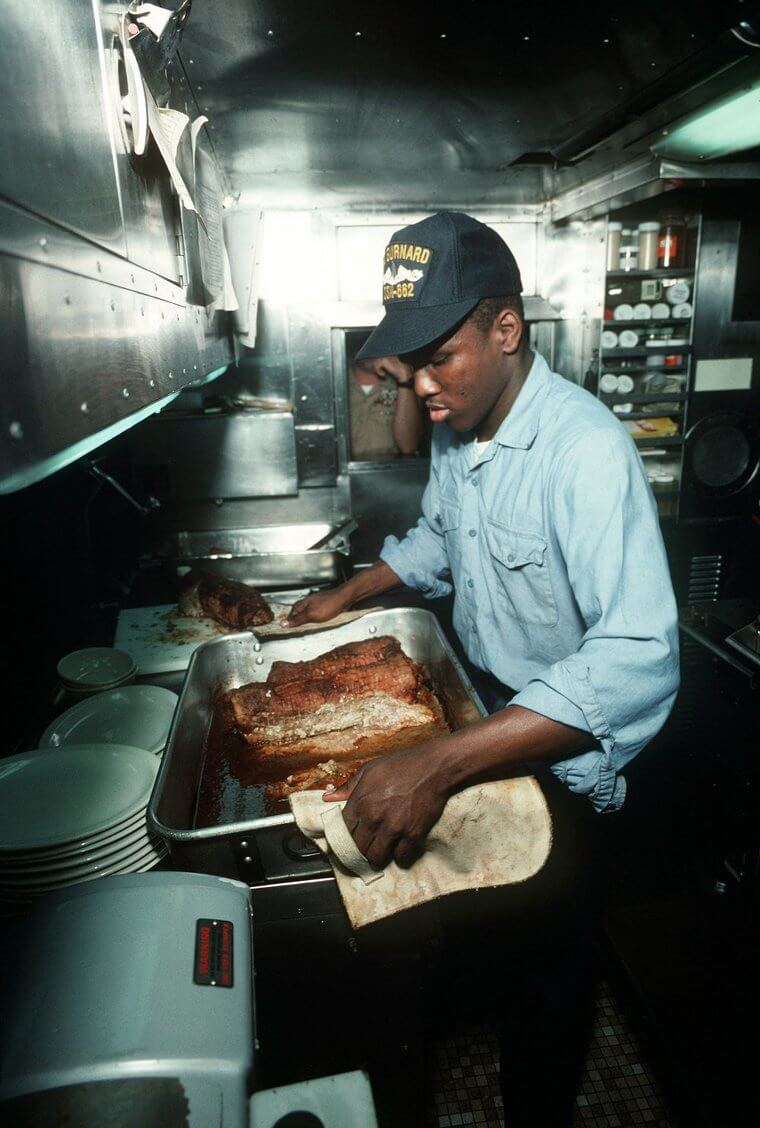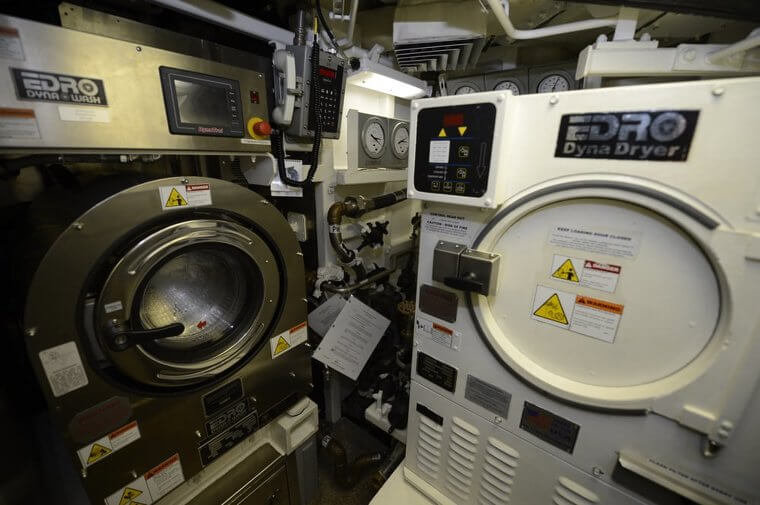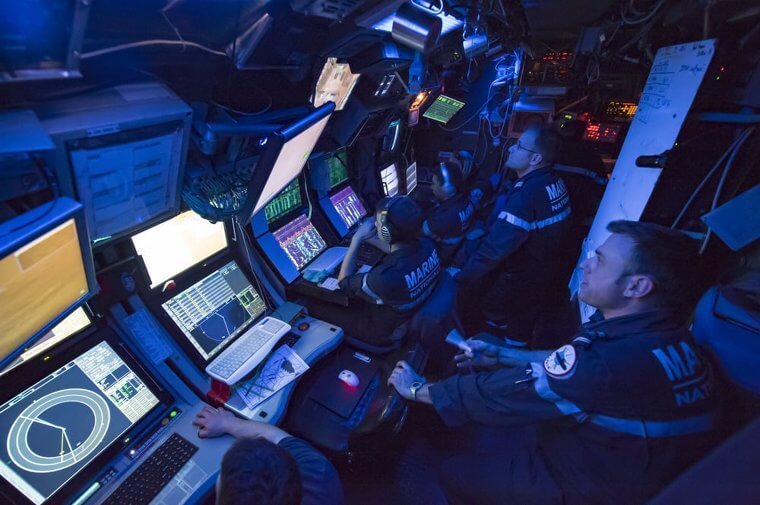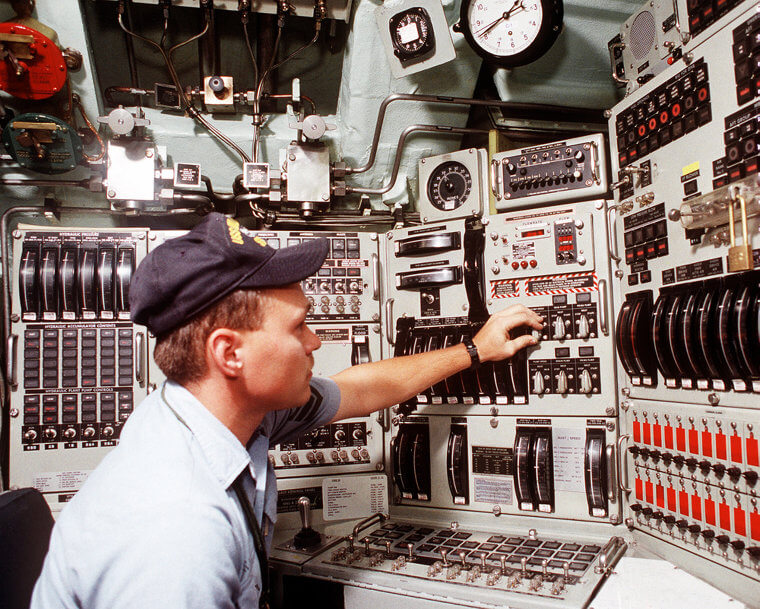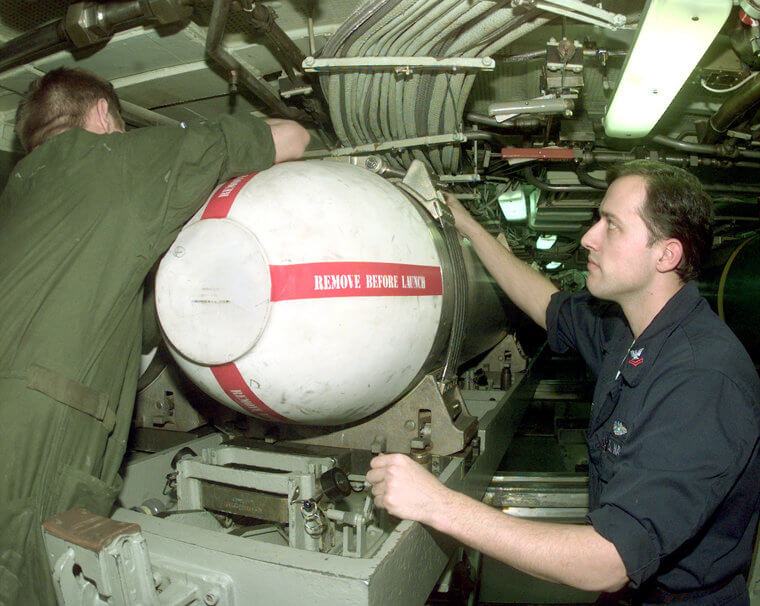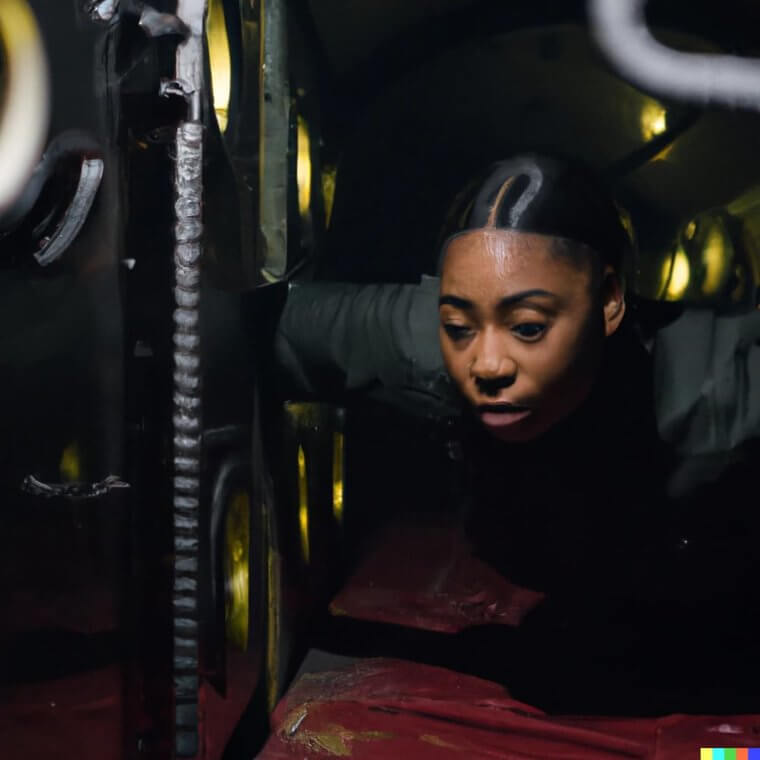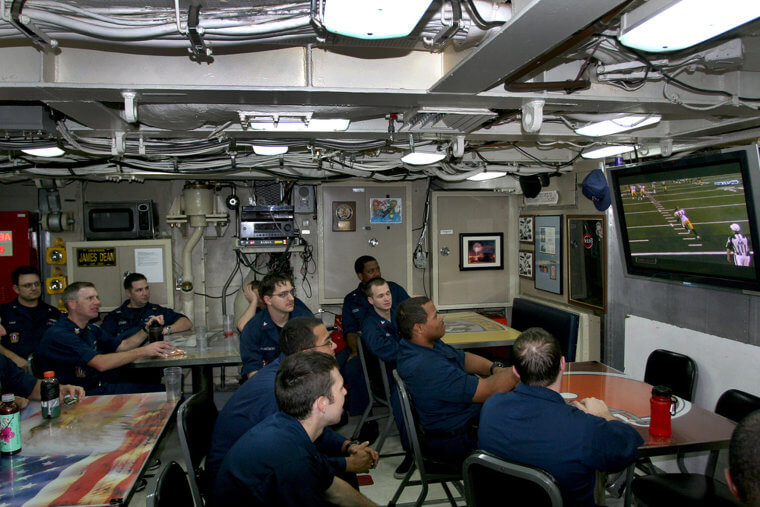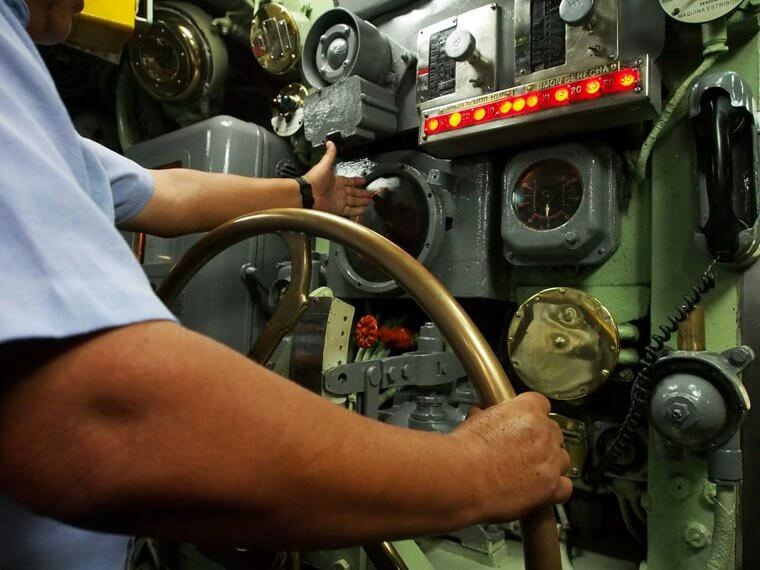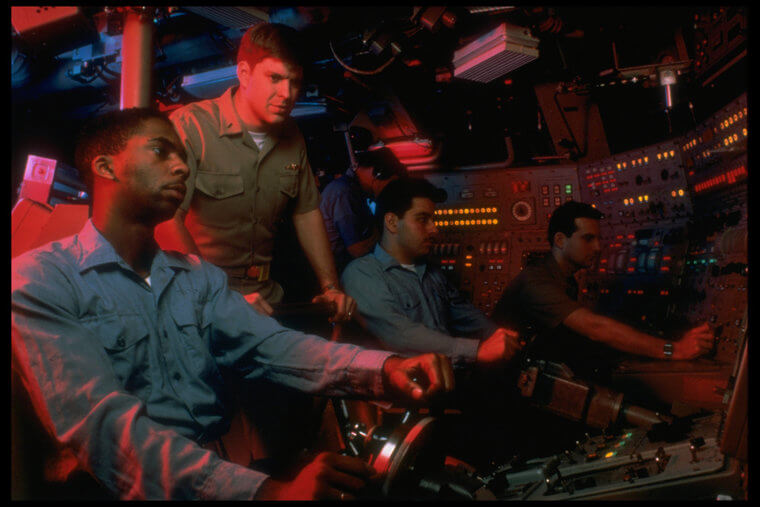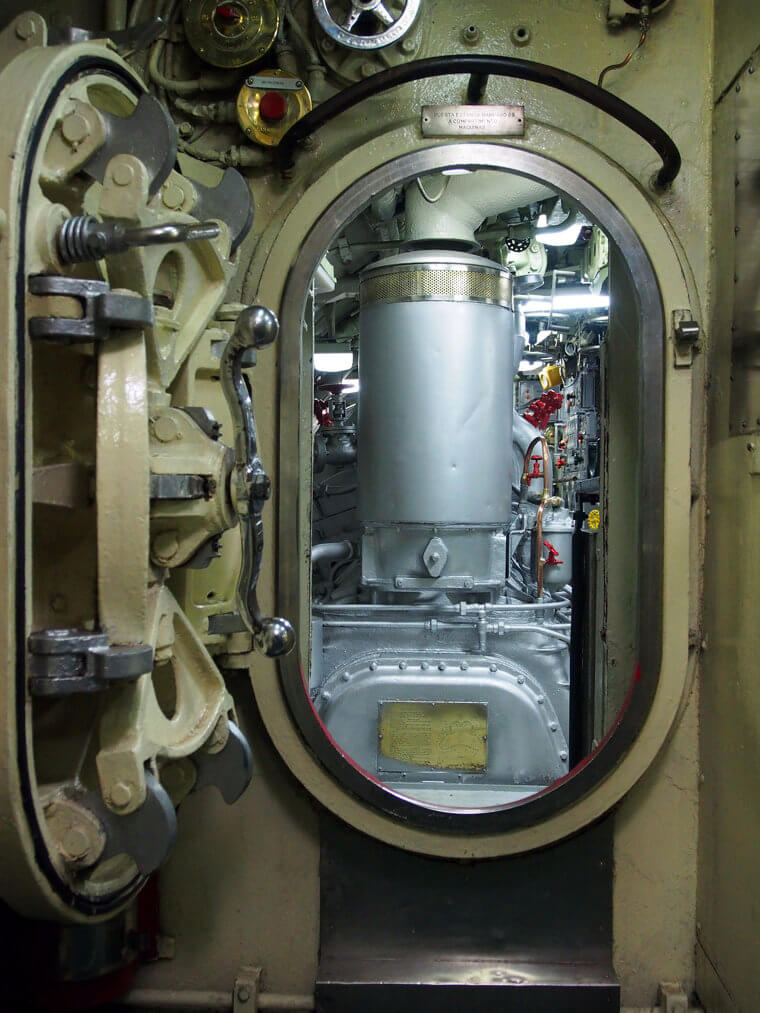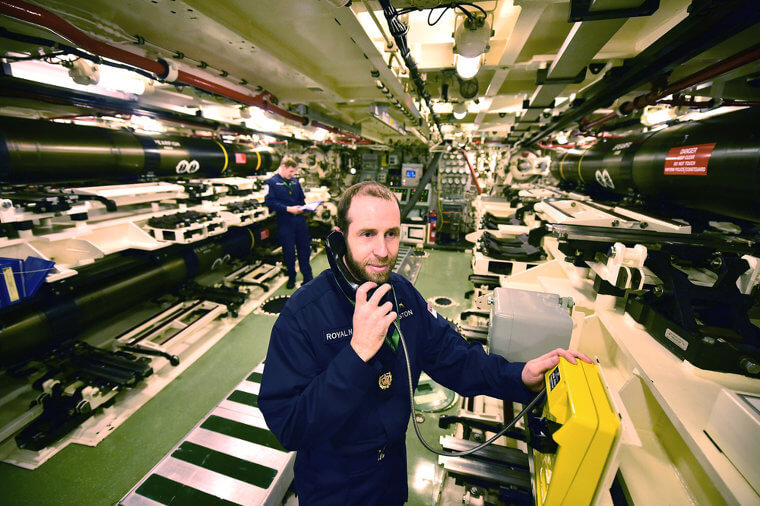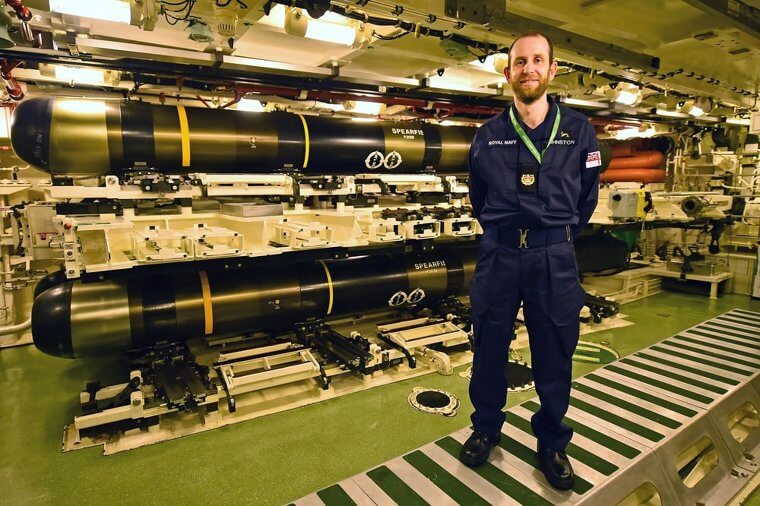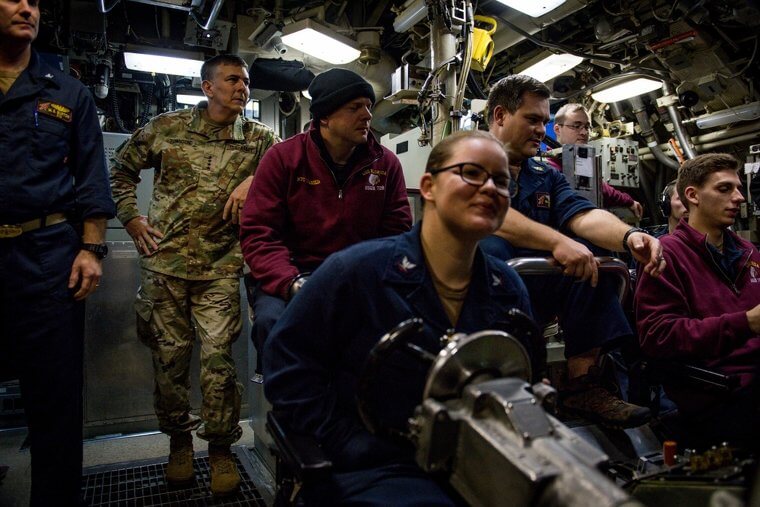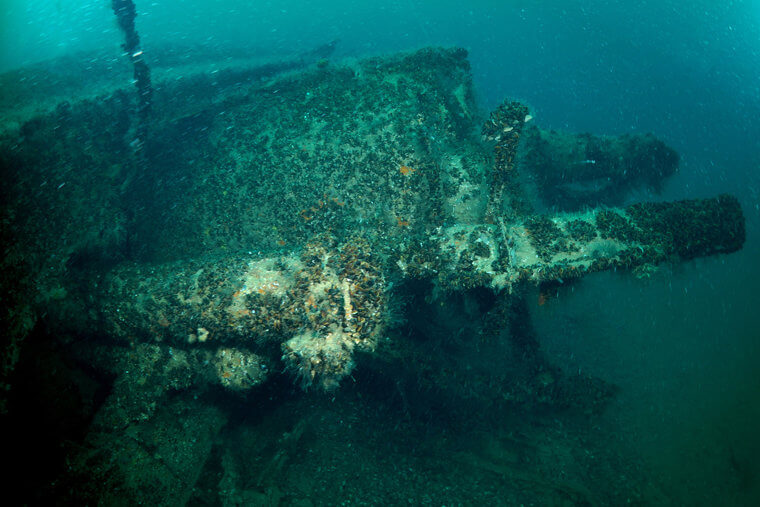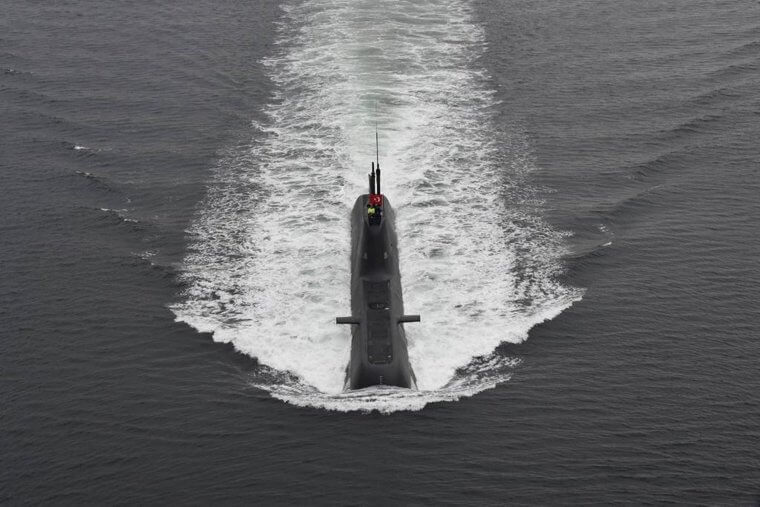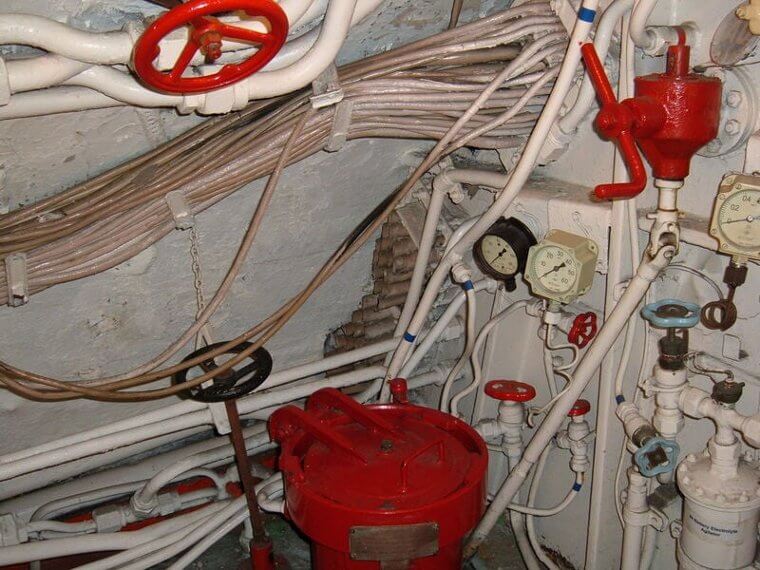Living on a submarine sounds quite enjoyable, but it also appears to be quite nerve-wracking at times. Also, it also does not sound like the most hygienic experience. To help you get a better understanding of submarine life — you know, in case you ever consider moving underwater — we've compiled this list of facts about submarine life. So, let's take a dive into submarine life!
Everything Improved When They Changed the Shift Duration
In the years prior to 2014, the submarine force worked 18-hour days, with sailors standing watch for six hours a day and having 12 hours off for other responsibilities and sleep. Soldiers were suffering under strain, but they persisted and tried to endure.
However, thanks to the efforts of a few junior officers, it was decided to reduce the length of the watches to eight hours with 16 hours off. According to the officers, the switch had an immediate and positive impact on their situation. Individuals' performances have improved as a result of this change, and the overall morale on the boat has also improved.
Once It Dives, Time Loses Meaning
Due to the nature of their missions, submarines operate underwater or at the bottom of the ocean, and it is extremely rare for them to see the sun or the moon during their operations. Consequently, it is extremely easy for them to lose track of time after they've spent so much time inside the submarine.
In light of the fact that these boats can be submerged for weeks or even months at a time, this is particularly true. Nonetheless, if you ever find yourself on board a submarine, don't be concerned; you will have access to a clock! The point is that you'll most likely find it extremely difficult to determine what time it is without consulting a clock or other external source.
"You Spin My Head Right Round, Right Round"
As you might have guessed from the title, being on board a submarine doesn't always feel like smooth sailing. Although usually a stable ride, sometimes the crew is forced to take the submarine on a couple of extreme turns. And they have a really funny name for that – angles and dangles.
Most of the time, this is done to assess the crew's ability to deal with extreme situations. This primarily entails groping around for whatever you can find and making certain that all of the equipment is securely fastened in place. Then it's just a matter of sitting back and enjoying the bumpy ride.
The Most Unusual Name for Beds
Living aboard a submarine, a metal tube submerged in water is creepy enough as it is. So it may surprise you that the small and cramped bunk beds for the submerged passengers earned them a very dreary name—"coffins—and rightfully so. The bunks in submarines are around 60cm x 180cm, confided in a tiny space with up to 160 other men and a cornucopia of cables, pipes, valves, and engines.
The coffins have reportedly even caused traumatic nightmares. "Many people talk about the 'coffin dreams' they used to have in their bunks," says Neve, a submarine Lieutenant Commander. "I have had my own coffin dreams and my wife tells me I still do." Another nickname is "hot-bunk"—given when someone finishes their long shift and replaces their friend in a bunk, who kept it warm for them. That's friendship!
You Can Try to Acquire the Highest Honor—The Dolphin Pin
Dolphins are the most adorable creatures, but they're way more than that to submarines. Dolphins are also known for their exceptional integrity, and the soldiers of the submarine are indeed well aware of this. Officers who live onboard a submarine must work extremely hard in order to achieve the highest level of respect from their superiors.
To obtain the dolphin pin the marine must become familiar with the submarine's operation and learn how to use it as a weapon. Then, of course, you have to pass the test with flying colors. It may appear to be a straightforward task, but keep in mind that the submarine has thousands of parts and functions, making this an exceptionally difficult task.
You Absolutely Have to Be a Team Player and Share Things
All of us are familiar with the adage "Sharing is caring." That sentiment is especially true if you're living on a submarine. Why? Because submarines do not have bunks for each and every one of their crew members. In this situation, two to three people usually share the same bunk bed with one another.
How? When one person's shift is over, they wake up another crewmate who is sleeping in the bunk above them in the same room. This occurs so frequently that submariners have coined the term "hot racking," which refers to the warm spot on the bed that someone else has left behind after sleeping there for six hours or longer.
They Are Trained to Fall Sleep Anytime and Anywhere
In accordance with their highly unusual lifestyle, the officers and marines who live on submarines learn and train themselves to sleep whenever and wherever they want. They reached such expertise, that you can, in fact, have a full-on conversation with someone who is sleeping, and that person will not wake up.
There is a way to break this sleep magic though. If you call their name once in a lower tone, they'll be up in no time. That's exactly right, and the outcome of the submariners being a bunch of extremely adept snoozers. If only we had that kind of ability. We'd take a nap or fall asleep anywhere and at any time.
The Oxygen Levels Are Much Lower
Yet another challenge that the submariners have to face is the change in the very air they breathe. Submarines maintain extremely low oxygen levels, and while this is done for safety reasons, it can have some serious consequences.
For example, if your body has been injured, lower oxygen levels make it more difficult for the body to heal itself, so if you end up cutting yourself while working on a submarine, you will most likely not be the happiest of campers, even if the situation is rare. Beyond the fact that your wound would ooze continuously because it couldn't heal properly, low oxygen levels can cause your energy levels to plummet and even invoke mood swings.
Never Try to Steal Anything
You're probably wondering why we're putting such a strong emphasis on theft in this particular section. It turns out that those who steal while aboard a submarine face some serious repercussions as a result. The thief will be apprehended in some way or another – it's an enclosed space after all, and they are sure to get caught in one way or another.
Once this occurs, they are escorted off the boat at the next port of call. Not only that, but this type of incident can (as you might expect) result in demotions and rank reductions. These ramifications are understandable given the fact that these individuals are supposed to function as a group. So there it is – no thieves allowed on a submarine!
When You Board a Submarine, You Should Mentally Prepare Yourself and Recognize That Communicating With Your Loved Ones Will Be Different Than It Was Previously. No Mailman Is Going to Swim Deep Into the Ocean to Collect Your Mail and Deliver It to Your Loved Ones.
When you board a submarine, you should mentally prepare yourself and recognize that communicating with your loved ones will be different than it was previously. No mailman is going to swim deep into the ocean to collect your mail and deliver it to your loved ones.
The submarine can only be used to deliver or receive mail when it has risen to the surface. Even in this case, the submarine emits a signal that indicates where it is currently located, which the crew does not want to be revealed. Just keep in mind that communicating with the outside world while onboard a submarine isn't always going to be a piece of cake, so prepare yourself accordingly.
You Must Get Accustomed to Sleeping Besides Nuclear Warheads
At first glance, living in cramped quarters may not appear to be a bad thing. In fact, some people may find these tiny quarters to be quite comfortable — that is, until they realize that they are sharing the same space with some of the world's most catastrophic weapons.
Despite the fact that it is an unsettling thought, you should prepare yourself for months at a time in the presence of ballistic missiles, torpedoes, and even nuclear warheads. Each submarine can carry up to eight missiles, each of which can carry up to five nuclear bombs – or warheads – on top. And each one of these bombs is approximately eight times more destructive than the 1945 bomb that destroyed Hiroshima.
There Is a Mess Hall Designed for About Anything
As previously stated, submarines lack space, which limits the activities that the crew can engage in during their designated free time. Generally, crew members prefer to congregate in the mess hall – most likely because eating occurs in the crew's mess. Despite the limited galley space, good meals are the norm, with officers and enlisted men served the same menu.
Submarines are the best "feeders" in the Navy due to additional funding for food. However, the mess deck is virtually the only common space on a submarine for training and study, as well as a place for off-duty sailors to relax by watching videotapes, playing games, or conversing. This way, passengers can find some form of entertainment while they are deep underground.
Your Life Depends on Electronic Devices
Trying to imagine life without technology is nearly impossible. We have become so reliant on technology that it has become ingrained in our lives. Life has become easier, more convenient, safer, and more enjoyable as a result of technological advancements. Submarine crews are also heavily reliant on electrical devices.
Assume you're traveling to a location you're unfamiliar with, and you stop to ask for directions. Well, this is not possible aboard submarines. Submarines, as we all know, glide through the water, navigating solely through electronics and sophisticated machines. In other words, electronic machines have become an integral part of your life if you are on a sub.
The Average Tour Lasts At Least 90 Days
You may have fallen in love with submarine life and wish to pursue a career as a top-tier expert submariner, but beware — a significant commitment awaits you. This is because you will not be spending a few days underwater in a submarine.
Rather than that, you'll spend at least 90 days in this big metal tube. While this is the minimum duration for standard tours, it is frequently extended to the point where you end up on the submarine for nearly six months. However, as mentioned previously, there are numerous activities that can be undertaken to pass the time efficiently and, more importantly, enjoyably.
Life On a Submarine Can Be a Bit Monotonous
Although some of you may believe otherwise, life on a submarine is not always filled with high-pressure action and bloody battles. On the contrary, for the most part, the daily submarine routine is rather relaxed, as the submarines most of the time wake up, work, eat, sleep, and repeat.
Every day, the crew members adhere to the same schedule, which, while it can become monotonous, is actually a very good thing. The main advantage stems from the fact that when the submarine is in distress, this could indicate that the entire world is in danger of being destroyed. So as long as they're keeping up the routine, its a good sign for all of us.
There Are No Huge and Luxurious Bathrooms Onboard
Please take into consideration the following fact when expressing dissatisfaction with your new apartment's bathroom size. Because submarines contain massive amounts of equipment and machinery, they have a limited amount of available space. Just look at this photo!
As you can see in this photo, the bathrooms on submarines are quite small, which can make anyone feel claustrophobic while they're going about their daily business. Assume this scenario and multiply it by a large number of crew members, and you'll have complete chaos on your hands. The thought of sharing one bathroom with a large group of people for a couple of months does not sound like a pleasant experience.
There Is a Limited Amount of Things You Can Bring
After reading this far down the list, you've probably already realized how limited the available space is inside a submarine. Now you have to share that space with a crew that can number anywhere from a few dozen to more than 100 people. That's completely insane!
To that end, when it comes to packing your belongings for storage, remember that you will be sharing that space with a large number of other people. It is considered rude to bring any unnecessary items – even if it means that they will keep your sanity at normal levels.
You Have to Walk a Long Road Before You Become a Submariner
A critical thing to remember is that the fact that you want to be a submariner does not imply that you will achieve your goal in a short period of time. Becoming a part of a submarine crew member requires extensive training, which is a time-consuming and labor-intensive endeavor.
In the words of a former Navy crew member, you spend 10 hours a day studying non-stop before marching back and forth between ships for the first few months. To put it simply, they "cram four to six years of college-level information into a six-month period."
The Grooming Options Are Pretty Much Laid Back
Though they endure some of the harshest possible conditions, there are some While the strongest military branches are typically comprised of soldiers with clean-cut appearances, including little to no facial hair and buzz cuts, those who live aboard submarines adhere to a different set of rules and regulations.
These rules are a little looser, which is understandable given the fact that these men have been trapped in a metal tube for months on end. It's understandable that they don't want to shave every single day, given their busy lives.
The First Thing to Do After Diving
Once they've gone down under, the first thing that the submariners do is not tune their machines, check on the weapons' supply, or even tidy up the place, it's looking for potential leaks on the vessel.
The fact is that if the boat does have any leaks, their lives will be in grave danger. No matter how large the leak or hole is, they must cover or mend it in a short period of time — and they must do so as quickly as they can to avoid further damage. It is literally their lives that are at stake, and on a submarine, there is no room for mistakes.
There Is Literally No Running Around In the Hallways
We know that we've shared this information with you several times. We are doing that just because we want you to appreciate just how limited submarines' available space is. With that being said, here's yet another example that proves just how tiny the space is, and how even a tine can ruin it for everyone.
Because of the limited amount of space available, the majority of the areas inside these boats are completely crammed, which includes the hallways as well. To be more specific, the corridors are so narrow that only one person can pass through them at a time. In other words, two members cannot even walk side by side through a hallway.
Showers Are Also Cramped, and You Can't Use Them Whenever You Want
What do you recall about the size of restrooms on submarines that we discussed earlier? The topic of discussion this time is the entire shower situation. As we are all aware, many different types of machinery and equipment take up the majority of available space.
As a result, when it came to installing a shower, they had to think outside the box. In order to accommodate this, showers on submarines are typically — you guessed it — quite claustrophobic. On top of that, you can't use them when you feel like, but instead, there are designated showering times – you know, for water-saving purposes.
But On the Contrary, Kitchens Are Huge
The galley, or kitchen, on a submarine, is where all of the food is prepared for the crew members on board. Considering that we've mentioned time and time again that submarines are severely restricted in terms of available space, this info might surprise you.
Unlike other rather essential spaces in the vessel, the kitchens are actually quite big. However, you must keep in mind that these are submarine terms, and kitchens aren't really that large. But when compared to the other areas on board, they're a breath of fresh air. After all, chefs need a lot of room to prepare so much food for numerous crew members.
That's Why Submariners Eat Three Huge Meals a Day
We can't talk about submarine kitchens without bringing up the subject of the food served on board. During the course of a submarine patrol, which could last weeks or even months without resupply, modern American submarines feed their crew members three meals a day for the duration of the patrol.
Surprisingly, the food they receive isn't shabby at all. For some time, submariners get freshly cooked food on the table, as the fresh provisions can last up to 10 days. According to our sources, the cooks aboard the ballistic missile submarine USS Lousiana regularly prepare meals such as fish fillets and pizzas. Compared to other types of military food, this is a Michelin Star meal.
But There Are Enough Clean Clothes Available
Typically, a submarine has only one washer and one dryer, which is a significant limitation. This means that each time it is used, it can only handle a small amount of clothing at one time. And, contrary to popular belief, these washers and dryers are not significantly different from the ones you already have at home.
Sure, they may be a little smaller in size due to the fact that they must fit into a small space, but that is about the only difference between them and the rest of the world. They use detergents and softeners just like us. After all, it is too cramped to run around smelling like sweat and who-knows-what.
They Need Their Strength
Watch responsibilities are not assigned at random among the members of the crew. Instead, they create a schedule for the upcoming months based on a hierarchy of sorts that they can then modify as needed.
Everyone is required to participate in watch duty, but the time and location will vary depending on the rank of the personnel. Also considered is the type of specialized training that each of these individuals has received. Or, in other words – with higher rank comes greater responsibility – similar to superheroes.
The Officer's Watch Is a Bit Different
Due to the fact that we've already discussed watch duties and how responsibilities are distributed among the crew members, we'd like to get a little more specific about what each crew member is responsible for during watch duties.
For example, the deck officer is required and is in charge of the conning tower, which is a raised platform on the submarine from which the officer can control the vessel's navigation. For better or worse, the officer can direct ship movements by issuing orders to those in charge of the ship's engine, rudder, lines, and ground tackle, among other things.
Who Is In the Charge of the Weapons System?
You must be wondering how the crew members manage to fit so many weapons into such a small space when everything is so crammed and there is so little available space. That is, after all, what the command launch is primarily used for: to store all of these different types of weapons.
The control room, like any other area onboard a Navy or Marine vessel, has specific requirements that must be followed. Just because there is room for weapons doesn't mean that they aren't restricted in their use. On top of that, as there is limited space available, certain design features, such as specific lighting solutions, are required.
You Can Still Find a Moment for Yourself In the Gym
Let's face it: spending months at a time on a submarine can drive even the most patient person insane. As a result, commanders and officers do everything they can to keep their crews happy, and they have come up with several creative solutions as to how to do exactly that.
One of the first things they needed to make sure of was that the members had a few outlets for both relaxing and letting off steam that had built up. In light of the limited available space, it may come as a surprise that many subs include a small workout area or gym. This aids in keeping the crew focused, in shape, and relaxed while on the job.
Do They Have Famed Trident Missiles?
Now that we've learned where the weaponry is located on these submarines, it's time to learn a little bit more about the weapons themselves. The Trident missile system, which consists of submarine-launched ballistic missiles with multiple independently targetable reentry vehicles, is carried by a number of submarines.
Originally developed by Lockheed Missiles and Space Corporation, the missile is armed with thermonuclear warheads. To put it another way, if your submarine is transporting one, exercise extra caution. On the other hand, knowing that you have something as powerful as this to protect you can make you feel at ease.
The Best Way to Kill Time Is With the Help of Board Games
Let's take a break from war and gore and talk about something light and entertaining. Not many people are aware that sailors and crew members have a variety of recreational options available to them.
In any case, members keep themselves occupied in their spare time by participating in card and board games. That sounds a lot like summer camp, doesn't it? Please, they deserve to have some fun as well, especially considering that they may be underwater for weeks or months at a time!
Do You Know What Happens When Toilets Get Clogged?
Toilets on submarines become clogged in the same way that they do at home. The way it is supposed to work is that the water from the toilets is pumped into three sanitary tanks on board the vessel.
A valve-line malfunction would cause water to flow somewhere else, such as into the kitchen sinks, if the line had been disconnected by mistake. Also, if you've ever wondered where all of this wastewater is supposed to be going, we can tell you that it's being dumped into the ocean.
They Are Superstitious and Have Weird Ceremonies
Sailing crews are well-known for their superstitions and strange rituals. One of these ceremonies is referred to as the "Line-Crossing Ceremony." Contrary to popular belief, crossing the line does not imply that someone is being punished for, well, crossing the line.
Crossing the Equator is what it really stands for in reality. Everyone who has already crossed the Equator is referred to as "shellbacks," and they are the ones who initiate the wogs (a contraction of pollywogs), or those who haven't crossed the line yet.
Slamming Doors Is Strictly Prohibited
Because sailors get so little sleep, and because it's so difficult to get a good night's sleep on a submarine, there is a very strict rule against slamming doors on the ship. Because even the tiniest noise can cause people to awaken, slamming doors is strictly forbidden.
There is yet another aspect to this as well. It is sometimes absolutely necessary to maintain complete silence in order to avoid being detected by enemy vessels using sonar. As a result, slamming doors or making other loud noises is strictly prohibited.
You Can't Really Shower As Long As You Want
A submarine's clean water supply is extremely limited, even though the vessel is virtually completely surrounded by water. Due to the fact that a submarine wishes to remain undetected, it must limit the number of times it expels used (grey) water from its system.
As a result, showers are limited to no more than three or five minutes in duration. It is dependent on the water run time, which is the amount of time it takes for used water to be cycled out of the ship's systems. After all, who would want to stay longer in those cramped and claustrophobic showers?
Submariners Have Completely Different Uniforms – A Special Kind
Submariners, in contrast to the rest of the Navy, are provided with a unique type of uniform. Yes, they still bear all of the markings and colors of the United States Navy, but they have their own distinctive look.
Submarine sailors wear deep blue overalls, just like other sailors, but these are made of lint-free polyester, which makes them more sanitary. And what is the reason for this? The air filtration system on board the submarine may become clogged with lint. In addition, this garment was given the amusing nickname "poopie suit."
How Are They Producing Enough Oxygen?
Have you ever wondered how the servicemen (and, more recently, servicewomen) on submarines manage to avoid suffocating? It is possible for submarines to produce oxygen from water thanks to a simple but effective technology that has been developed over decades.
Seawater is subjected to an electrolysis process, which, in essence, allows for the extraction of oxygen from saltwater. Additionally, submarines are equipped with a couple of oxygen tanks in the event that these systems fail and there is an urgent need to release oxygen into the submarine's internal environment.
Do You Know What Happens if Submarine Hits Rock Bottom?
The depiction of submarines lying at the bottom of the ocean, particularly in Hollywood films, is sometimes inaccurate. Have you ever questioned whether something is even possible? The answer is straightforward: it is dependent on the type of submarine in question.
According to reports, electric-diesel submarines are lighter and more maneuverable than conventional submarines, and they are capable of doing so if the depth is within their capabilities. However, their larger sisters, the nuclear submarines, are less likely to engage in such behavior because they may become stranded at the bottom of the ocean.
The Secret of Staying Hidden In the Water With Anechoic Coating
Submarines must maintain as much silence as possible in order to avoid detection. As a result, their hull is coated with a special material known as an anechoic coating to reduce reverberation. It is made up of intricately engineered rubber tiles that are glued to the submarine's hull.
Because these rubber tiles absorb the sound of breaking waves against the vessel's hull, the vessel's acoustic signature is reduced as a result. They also help reduce the amount of noise emitted from the submarine, allowing it to remain as stealthy as possible. Furthermore, when you couple that with other noise-reduction rules, you get a virtually undetectable object, and you can only hear the silence!
On average, a submarine has about 100 people serving on board, with some vessels having even more. Because of this, they generate a large amount of waste, ranging from candy wrappers to eggshells and even Q-tips. Where does all of this waste end up?
To address both environmental safety concerns and the mission's overall success, some of the trash is sorted until it can be unloaded and recycled onshore, whereas the trash that cannot be recycled is sealed in special steel cans and dumped into the ocean.

